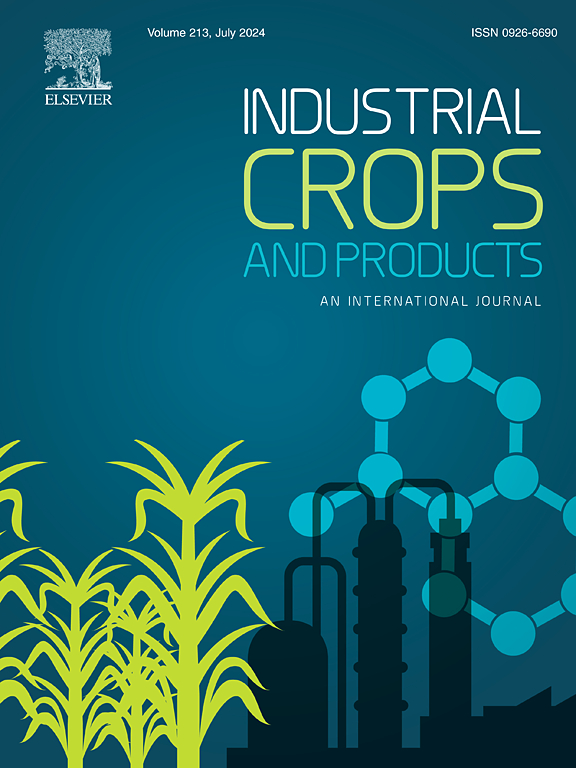新型三乙基四胺改性木质素磺酸钠离子印迹聚合物对废水中Cr(VI)的有效选择性清除:性能、机理及应用
IF 6.2
1区 农林科学
Q1 AGRICULTURAL ENGINEERING
引用次数: 0
摘要
通过用三乙烯四胺(TETA)改性木质素磺酸钠(SL),合成了一种新型离子印迹聚合物(SIIP),可选择性地吸附废水中的六(七)铬。SIIP 对六价铬的吸附容量高达 464.73 mg/g,是 TETA 改性 SL(TS)的 1.1 倍。SIIP 在短短 30 分钟内就达到了对 Cr(VI) 的吸附平衡。在单一六价铬溶液体系中,SIIP 对六价铬的选择性吸附量为 75.81 mg/g,而在六价铬/铜(Ⅱ)混合溶液体系中,选择性吸附量为 29.55 mg/g。与未改性的 TS 相比,这些数值更大,这表明 SIIP 的吸附性能得到了增强。鉴于 SO42- 与 HCrO4- 在分子尺寸和水合能方面的相似性,SIIP 在吸附六价铬的过程中,SO42- 对共存离子的吸附效果非常明显。机理分析表明,SIIP 对六价铬的吸附涉及表面络合反应、还原过程和静电吸引效应。这些研究结果表明,SIIP 在含六价铬废水处理领域具有巨大的潜力。本文章由计算机程序翻译,如有差异,请以英文原文为准。

Effective and selective scavenging of Cr(VI) by novel triethylenetetramine-modified sodium lignosulfonate ion imprinted polymer from wastewater: Performance, mechanism, and application
A novel ion-imprinted polymer (SIIP) was synthesized by modifying sodium lignosulfonate (SL) with triethylenetetramine (TETA) to selectively adsorb Cr(VI) from wastewater. SIIP exhibited a high adsorption capacity for Cr(VI) of 464.73 mg/g, which is 1.1 times higher than that of TETA-modified SL (TS). SIIP reached adsorption equilibrium for Cr(VI) within just 30 min. In the single Cr(VI) solution system, the selective adsorption amount of SIIP for Cr(VI) was 75.81 mg/g, while in the mixed Cr(VI)/Cu(Ⅱ) solution system, it was 29.55 mg/g. These values were greater compared to those of the unmodified TS, demonstrating the enhanced adsorption performance of SIIP. In view of the similarity between SO42– and HCrO4– in terms of molecular size and hydration energy, during the adsorption of Cr(VI) by SIIP, the SO42– had a remarkably obvious effect on the co-existing ion adsorption. The mechanism analysis revealed that the adsorption of Cr(VI) by SIIP involved surface complexation reactions, reduction processes, and electrostatic attraction effects. These findings suggest that SIIP holds substantial potential in the realm of Cr(VI) containing wastewater treatment.
求助全文
通过发布文献求助,成功后即可免费获取论文全文。
去求助
来源期刊

Industrial Crops and Products
农林科学-农业工程
CiteScore
9.50
自引率
8.50%
发文量
1518
审稿时长
43 days
期刊介绍:
Industrial Crops and Products is an International Journal publishing academic and industrial research on industrial (defined as non-food/non-feed) crops and products. Papers concern both crop-oriented and bio-based materials from crops-oriented research, and should be of interest to an international audience, hypothesis driven, and where comparisons are made statistics performed.
 求助内容:
求助内容: 应助结果提醒方式:
应助结果提醒方式:


